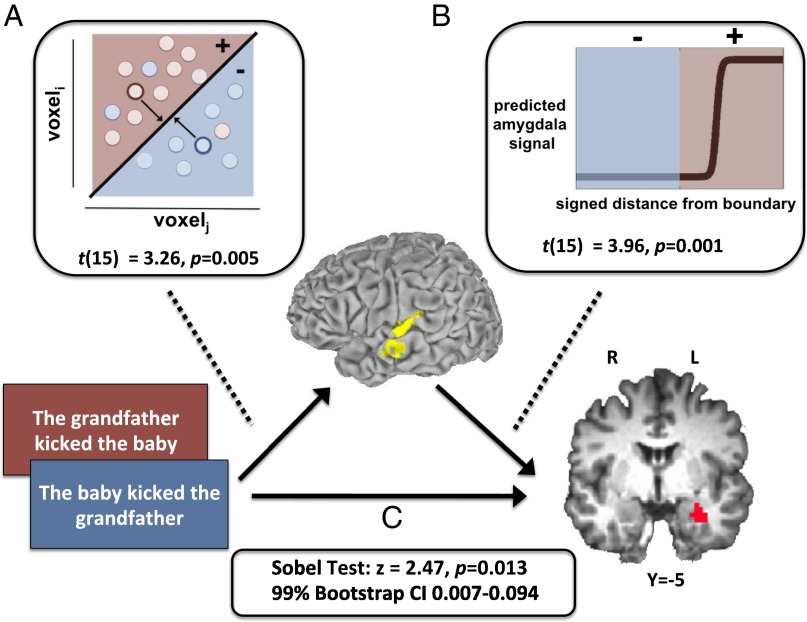Fig. 1.
Model of information flow from stimulus to lmSTC to amygdala in experiment 1. (A) A pattern classifier determines which of two propositions was presented using activity in lmSTC. Distance from the classification boundary indicates the extent to which a learned pattern was instantiated. The red region corresponds to the emotionally evocative proposition (e.g., “the grandfather kicked baby”), whereas blue corresponds to the less evocative proposition (“the baby kicked grandfather”). (B) For each trial, the classifier’s signed distance from the classification boundary was transformed by a sigmoidal function and used to predict the mean level of activity in the left amygdala. (C) Patterns in lmSTC mediate the relationship between the proposition on the screen and the amygdala’s response, consistent with a model according to which the lmSTC encodes the structured representations necessary to generate an emotional response.

